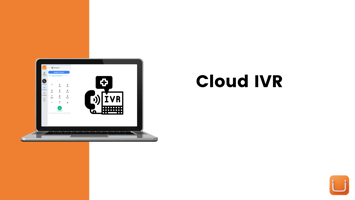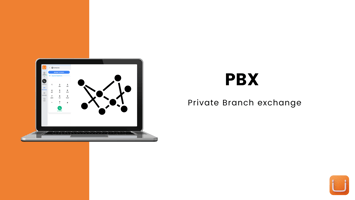Unlocking Business Insights: The Power of Speech Analytics.
Introduction: Unlocking the Power of Speech Analytics
Imagine a world where every conversation, every phone call, every customer interaction holds the key to unlocking valuable insights.
In this data-driven age, businesses are turning to a revolutionary technology that can transform the spoken word into a treasure trove of information.
Now, picture all those conversations being analyzed, not just for quality assurance, but to uncover hidden opportunities, detect customer sentiment, and drive strategic decision-making.
Welcome to the fascinating realm of speech analytics.
Speech analytics
Speech analytics is the cutting-edge discipline that harnesses the power of technology to dissect spoken language and unearth profound insights.
It's the process of scrutinizing verbal communications, whether in call center conversations, sales pitches, or even recorded meetings, to extract invaluable data.
Think of it as the art of listening to what is being said, and the science of deciphering what it means. In a world where words matter, speech analytics is the key that unlocks the true value of every spoken syllable, propelling businesses towards greater success and deeper understanding of their customers.
In this article, we'll delve into the importance, the mechanics, and the transformative potential of speech analytics.
So, let's embark on this journey to discover how the spoken word can be a catalyst for change in the digital age.
Importance of Speech Analytics: Unveiling Business Advantages
Business Applications: Speech analytics is not confined to one industry or sector; it's a versatile tool with applications spanning across a multitude of domains. From customer service to sales, marketing to healthcare, and beyond, its impact is far-reaching. In the realm of customer service, it aids in identifying common pain points, ensuring quicker issue resolution, and ultimately, elevating service quality. In sales, it's a game-changer for understanding customer needs, predicting market trends, and crafting compelling pitches. Even in healthcare, speech analytics assists in compliance monitoring, patient feedback analysis, and improving the overall healthcare experience. Its adaptability knows no bounds, making it a must-have in the toolkit of modern businesses.
Improved Customer Experience: The heart of any business lies in its customers, and speech analytics plays a pivotal role in ensuring their satisfaction. It's not just about hearing what customers are saying; it's about truly listening, comprehending, and acting upon their words. By analyzing customer interactions in real-time, companies can spot areas where service can be enhanced, promptly address issues, and tailor their approach to individual needs. This level of personalization builds trust, enhances loyalty, and transforms a one-time buyer into a lifelong advocate. The result? A customer experience that's not just good but outstanding, setting businesses apart in a competitive landscape.
Data-Driven Decision-Making: In an era where data reigns supreme, organizations armed with speech analytics gain a profound advantage. Each customer conversation is a repository of insights waiting to be tapped. These insights, often hidden in the nuances of language, hold the key to strategic decision-making. By tracking and analyzing these conversations, businesses can identify emerging trends, understand customer sentiment, and even predict future behaviors. Whether it's refining marketing campaigns, optimizing product offerings, or fine-tuning customer service protocols, speech analytics ensures that decisions are grounded in data, reducing guesswork and increasing the likelihood of success. It's not just about making decisions; it's about making the right decisions, and speech analytics provides the compass that points the way.
In the world of business, staying ahead means being attuned to customer needs, adapting to changing market dynamics, and making informed choices. Speech analytics is the bridge between what is said and what can be achieved, transforming mere conversations into actionable insights. As we journey deeper into the realm of speech analytics, we'll uncover the key features, benefits, and challenges that make it an indispensable tool for modern enterprises.
Key Features and Components: The Engine Behind Speech Analytics
Speech Recognition: At the heart of speech analytics lies the remarkable technology of speech recognition. This vital component converts the spoken word, which is essentially audio data, into a text format that is easily processed and analyzed. Picture this: a customer service call where a representative is addressing a client's concerns. Speech recognition software transcribes the entire conversation, creating a written record of what was said. This transformation from voice to text serves as the foundation for all subsequent analyses. It's the equivalent of turning the spoken language into a language that machines can understand and analyze.
Natural Language Processing (NLP): But merely converting audio into text is not enough. The real power of speech analytics comes to life through Natural Language Processing, or NLP. This branch of artificial intelligence focuses on teaching computers to understand and interpret human language. In the context of speech analytics, NLP algorithms work their magic by going beyond mere words. They dissect sentences, identify grammatical structures, and even discern the tone, context, and nuances of conversations. This level of comprehension allows organizations to dig deeper into what's being said, extracting not just information but also meaning. NLP transforms text into actionable insights, enabling businesses to understand customer intent, extract valuable data, and derive profound conclusions.
Emotion and Sentiment Analysis: Speech analytics doesn't stop at understanding words; it extends to deciphering emotions and sentiments. Imagine a customer expressing frustration during a support call. Through advanced algorithms, speech analytics can detect the emotional tone in the voice, recognizing not just the words but also the underlying feelings. It's akin to having an emotional barometer that measures customer sentiment. By discerning whether a customer is happy, frustrated, or indifferent, businesses can tailor their responses in real-time, addressing concerns with empathy, and turning potentially negative experiences into positive ones. Emotion and sentiment analysis make customer interactions not just transactional but emotional, fostering deeper connections and loyalty.
Keyword Spotting: In the vast sea of words, some are more precious than others. Keyword spotting is the art of identifying those specific words or phrases that hold paramount importance for an organization. These keywords could be related to product names, competitor mentions, compliance terms, or even customer preferences. By using keyword spotting, businesses can create customized alerts. When a specific keyword is detected in a conversation, it triggers a notification, ensuring that critical issues are addressed promptly. This feature enables organizations to proactively respond to customer needs, track market trends, and stay compliant with industry regulations.
As we journey deeper into the world of speech analytics, these components form the core of a technology that can transform raw conversations into actionable insights. The combination of speech recognition, NLP, emotion analysis, and keyword spotting paints a vivid picture of what's being said, what it means, and how businesses can leverage this information for their benefit. It's not just about hearing the words; it's about understanding the language of opportunities and challenges that every conversation holds.
Benefits of Speech Analytics: Transforming Conversations into Business Success
Improved Customer Service: One of the most tangible benefits of speech analytics lies in its ability to elevate customer service to unprecedented heights. By meticulously analyzing customer interactions, organizations can swiftly identify and rectify service issues. Whether it's a pattern of unresolved complaints, excessively long hold times, or consistently misinformed representatives, speech analytics acts as a vigilant watchdog. It doesn't just identify these issues; it pinpoints their root causes. Armed with this knowledge, businesses can proactively address shortcomings, streamline operations, and provide customers with the exceptional service they deserve. This translates into happier customers, glowing reviews, and enduring brand loyalty.
Enhanced Compliance: In highly regulated industries such as finance and healthcare, compliance with industry standards and regulations is non-negotiable. Here, speech analytics plays a pivotal role in ensuring that every interaction adheres to the prescribed guidelines. By continuously monitoring conversations for compliance-related keywords and phrases, businesses can identify potential violations before they escalate. This proactive approach not only mitigates risks but also saves organizations from costly penalties and reputational damage. Speech analytics is the guardian of regulatory compliance, providing peace of mind in industries where precision is paramount.
Increased Sales and Revenue: Beneath the surface of everyday conversations lie untapped sales opportunities. Speech analytics has the power to unearth these hidden gems. By scrutinizing customer interactions, businesses can identify trends in customer needs, preferences, and pain points. Armed with this knowledge, sales teams can craft more effective pitches, tailor products or services to customer demands, and even predict market trends. Furthermore, it enables organizations to analyze successful sales calls, identifying winning strategies and best practices that can be replicated across the team. The result? A direct boost to sales and revenue, driven by data-driven decision-making.
Reduced Churn: Customer churn is the silent profit killer. Retaining existing customers is often more cost-effective than acquiring new ones. Speech analytics can be a powerful ally in reducing churn rates. By analyzing customer interactions, it can detect signs of dissatisfaction, such as repeated complaints, frustrations, or unresolved issues. Armed with this insight, organizations can take proactive measures to address these concerns, preventing customers from seeking alternatives. It's not just about retaining customers; it's about transforming potentially negative experiences into positive ones, building lasting relationships, and reducing the costly cycle of customer turnover.
In essence, speech analytics is more than just a tool; it's a strategic asset that empowers organizations to elevate customer service, navigate regulatory complexities, boost sales, and fortify customer relationships. It's the bridge between conversations and tangible business success, transforming dialogue into data, and data into decisions that drive growth and excellence. As we delve deeper into the world of speech analytics, we'll uncover its role in fostering data-driven cultures and addressing the challenges that organizations may encounter on this transformative journey.
Case Studies: Realizing the Potential of Speech Analytics
Let's explore real-world examples of companies that have harnessed the power of speech analytics to achieve remarkable outcomes:
Case Study 1: A Global Telecom Giant
Challenge: A leading telecommunications company faced a growing challenge – increasing customer churn rates. They needed a solution to identify the root causes of customer dissatisfaction and take corrective actions swiftly.
Solution: The company implemented a comprehensive speech analytics system to analyze customer service calls. The system detected patterns of customer frustration, long wait times, and unresolved issues.
Outcome: Armed with these insights, the telecom giant was able to revamp its customer service protocols. They reduced hold times, provided additional training to representatives, and introduced proactive issue resolution. Over time, customer satisfaction scores improved, and churn rates decreased significantly. The company not only retained more customers but also saw an increase in upsell and cross-sell opportunities, driving revenue growth.
Case Study 2: Healthcare Compliance
Challenge: A prominent healthcare provider needed to ensure that its customer service representatives were adhering to strict compliance guidelines during patient interactions. The consequences of non-compliance were severe, including potential legal actions.
Solution: The healthcare organization deployed speech analytics to monitor and analyze patient interactions. The system flagged conversations where compliance-related keywords or phrases were not used appropriately.
Outcome: With the help of speech analytics, the healthcare provider could proactively identify instances of non-compliance and take corrective actions. Representatives received targeted training, and compliance protocols were reinforced. This not only ensured adherence to regulations but also safeguarded the organization from legal repercussions. Additionally, it improved the overall patient experience, as customers felt confident that their privacy and data were being handled with care.
Case Study 3: Retail Sales Optimization
Challenge: A national retail chain was looking for ways to boost sales in its brick-and-mortar stores. They needed insights into customer preferences and effective sales strategies.
Solution: The retailer employed speech analytics to analyze customer interactions at the checkout counters and in-store assistance calls. They looked for patterns in successful upselling and cross-selling techniques.
Outcome: Armed with the insights from speech analytics, the retail chain implemented targeted training for its sales staff. They also adjusted their in-store layout and product placement based on customer feedback gathered from the analyses. The result was a noticeable increase in sales and revenue. Customers reported improved shopping experiences, and the retailer solidified its position in a competitive market.
These case studies exemplify the transformative potential of speech analytics across diverse industries. Whether it's reducing churn, ensuring compliance, or boosting sales, organizations can leverage this technology to turn everyday conversations into invaluable insights and tangible business outcomes. As we continue our exploration of speech analytics, we'll delve into the evolving trends and future prospects of this dynamic field.
Challenges and Considerations: Navigating the Path to Successful Speech Analytics
Data Privacy: The treasure trove of data contained within customer conversations also raises significant concerns about data privacy. Organizations must handle sensitive customer information responsibly and ethically. To address these concerns:
-
Anonymization: Implement techniques to anonymize customer data, removing personally identifiable information from speech analytics datasets.
-
Consent and Transparency: Ensure that customers are informed about the collection and use of their data, obtaining consent when necessary.
-
Compliance: Adhere to relevant data protection regulations, such as GDPR or HIPAA, to safeguard customer privacy.
-
Data Security: Invest in robust cybersecurity measures to protect stored speech data from unauthorized access or breaches.
Accuracy and Reliability: While speech analytics offers immense potential, challenges related to accuracy and reliability must be addressed:
-
Dialects and Accents: Variations in dialects and accents can challenge speech recognition accuracy. Continuous training of speech recognition models with diverse datasets can mitigate this issue.
-
Contextual Understanding: Improving the contextual understanding of speech analytics systems remains a challenge. Incorporating advanced natural language processing (NLP) algorithms can help systems better grasp the nuances of language.
-
Noise and Background Interference: Real-world conversations often include background noise and interference. Noise-canceling technologies and advanced audio processing can enhance the accuracy of speech recognition.
-
Sensitivity to Vocabulary: Fine-tuning speech analytics systems to recognize industry-specific jargon or product names can improve accuracy.
-
Human Validation: Employing human validation for critical insights can ensure that the data derived from speech analytics is reliable and actionable.
-
Continuous Improvement: Regularly update and train speech analytics systems to adapt to evolving language patterns and customer behaviors.
-
Benchmarking: Organizations should establish benchmarks and performance metrics to track the accuracy and reliability of their speech analytics solutions over time.
Addressing these challenges requires a holistic approach that combines advanced technology, data governance, compliance, and ongoing improvement efforts. By doing so, organizations can unlock the full potential of speech analytics while maintaining the integrity of customer data and the reliability of insights. As we delve further into the world of speech analytics, we'll explore emerging trends and innovations that address these challenges and drive the field forward.
Future Trends: Pioneering the Path Forward in Speech Analytics
AI and Machine Learning: The future of speech analytics is undeniably intertwined with advancements in AI and machine learning. These technologies are poised to take speech analytics to unprecedented levels of sophistication:
-
Predictive Analytics: AI-driven predictive models will anticipate customer needs and behavior based on historical data, enabling organizations to proactively address issues and capitalize on opportunities.
-
Conversational AI: Integrating speech analytics with conversational AI, like chatbots and virtual assistants, will create seamless customer experiences across channels, improving efficiency and personalization.
-
Sentiment and Emotion Analysis: AI-powered algorithms will continue to advance in detecting nuanced emotions and sentiments, enabling more accurate assessments of customer satisfaction and intent.
-
Customization: Machine learning models will allow organizations to customize speech analytics solutions to their specific industry and business needs, optimizing accuracy and relevance.
-
Real-Time Insights: AI will facilitate real-time analysis of conversations, providing instant feedback and enabling organizations to respond promptly to emerging issues or opportunities.
Omnichannel Integration: The future of speech analytics extends beyond phone calls to encompass a diverse range of communication channels, reflecting the evolving ways customers interact with businesses:
-
Chat and Messaging Apps: Speech analytics will extend to chat conversations, enabling organizations to gain insights from text-based interactions, including chatbots and customer support chats.
-
Social Media: Organizations will use speech analytics to analyze and interpret customer sentiments, reviews, and comments on social media platforms, enhancing brand perception and engagement.
-
Video and Voice Messaging: With the rise of video and voice messages in messaging apps, speech analytics will expand to include these forms of communication, extracting valuable insights from multimedia interactions.
-
Transparency Across Channels: Omnichannel integration will ensure that customer data and insights are seamlessly shared across various channels, providing a holistic view of customer interactions and preferences.
-
Unified Customer Profiles: Organizations will create unified customer profiles that include data from all channels, enabling personalized and consistent customer experiences.
The future of speech analytics is marked by its ability to harness AI and adapt to the diverse communication channels that customers use. This evolution promises more precise insights, improved customer experiences, and a deeper understanding of customer behavior. As organizations embrace these trends, they will be better equipped to meet the ever-changing demands of their customers and achieve sustainable growth.
Conclusion: Unleashing the Power of Speech Analytics
In the journey through the world of speech analytics, we've uncovered a transformative technology that converts conversations into valuable insights. Here's a recap of the key insights and benefits:
Speech analytics is the art and science of analyzing spoken language, offering invaluable insights across a wide array of industries, including customer service, sales, marketing, and healthcare.
It empowers organizations to improve customer experiences by identifying and rectifying service issues promptly, fostering loyalty, and enhancing brand perception.
Data-driven decision-making becomes a reality as speech analytics provides the data and insights needed for strategic planning and growth.
Real-world case studies demonstrate the tangible impact of speech analytics, from reducing customer churn to ensuring compliance and boosting sales.
Challenges related to data privacy, accuracy, and reliability are addressed through responsible data handling, advanced technology, and continuous improvement efforts.
The future of speech analytics lies in AI and machine learning, which will enable predictive analytics, conversational AI integration, and real-time insights.
Omnichannel integration expands the scope of speech analytics to encompass various communication channels, creating a unified and personalized customer experience.



